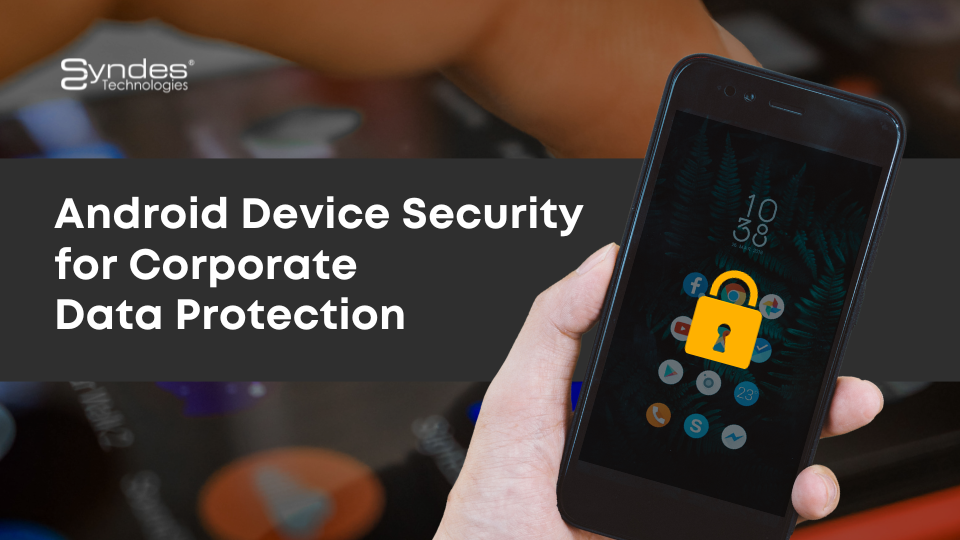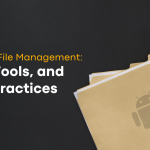
Android Device Security for Corporate Data Protection
Mobile devices have become an inseparable aspect of daily operations for almost every organization today. Hence, ensuring Android device security is paramount to protecting sensitive corporate data. As an IT administrator responsible for safeguarding your organization’s digital assets, it is crucial to understand the evolving threats and implement robust security measures.

This blog will discuss the latest statistics, key challenges, and effective strategies for securing Android devices, focusing on Mobile Device Management (MDM) solutions.
The Growing Significance of Android Device Security
The relevance of Android device security cannot be overstated, given that Android is the most widely used mobile operating system globally. Recent statistics reveal that Android has a dominant market share of almost 72%, with over 3.3 billion active devices worldwide as of 20231. As the number of Android devices in the corporate environment continues to rise, IT administrators must grapple with the expanding attack surface and the increasing sophistication of cyber threats.
Critical Challenges in Android Device Security
Diverse Ecosystem: The Android ecosystem is highly fragmented, with various device manufacturers, versions, and customized interfaces. This diversity poses a significant challenge for IT admins, as they need to ensure consistency in security across a wide range of devices. Consistency is necessary for the security and management of Android devices used within an organization in terms of policies and compliance.
BYOD Trend: The Bring Your Own Device (BYOD) trend further complicates security. A recent research2 states that 75% of employees use their personal devices for work. Employees using their personal Android devices for work necessitates a balance between protecting corporate data and respecting user privacy.
Read More on BYOD: What is BYOD and Why Is It Important for Gen-Y Companies
Malware Threats: Android devices are susceptible to malware, with the number of malicious apps rising year on year. In June 2023, a cybersecurity firm identified over 60,0003 unique malicious Android apps in a vicious malware campaign. It alarmingly emphasizes the need for robust security measures.
Non-secured Access: Public Wi-Fi environments are common today in cafes, hotels, shared workspaces, and other such settings. While it’s a nice thing to watch a movie trailer on your phone while sipping your espresso, public Wi-Fi is often non-secured and a threat to Android device security. Employees may sometimes access these Wi-Fi connections and open the doors for threat actors to unleash a phishing attack or a trojan.
Importance of Mobile Device Management in Android Security
MDM solutions are the linchpin for securing Android devices in corporate environments. Android device management tools allow IT administrators to manage, monitor, and secure mobile devices effectively. Here are the key aspects of securing Android devices using MDM solutions:
1. Remote Device Management
MDM solutions allow administrators to manage Android devices remotely. This includes configuring settings, enforcing security policies, performing updates, and wiping or locking devices. By maintaining control over devices, IT admins can mitigate the risks associated with device loss or theft.
2. Data Encryption
To protect sensitive corporate data, enabling data encryption on Android devices is crucial. Encryption ensures that even if a device is compromised, the data remains inaccessible without the proper credentials. While Android 7.0 or higher supports file-based encryption (FBE), every device launched with Android 10.0 or higher must use FBE. Metadata encryption, which is always enabled on adoptable storage when FBE is enabled, must be enabled on internal storage for devices launching with Android 11.0 or higher. Therefore, an Android Enterprise Partner is an ideal MDM solution for IT admins to make the most of data encryption.
3. Application Allowlisting and Blocklisting
MDM solutions enable administrators to define which applications are allowed on corporate Android devices. By creating allowlists and blocklists, IT admins can prevent the installation of malicious or unauthorized apps, reducing the threat of malware.
4. Secure Containerization for BYOD
As per a 2022 report4, 71% of employees store sensitive work information on their personal devices. The report also revealed that 43% of employees fell prey to phishing attacks targeting corporate data on personal devices. An MDM solution can strengthen the BYOD ecosystem of organizations through containerization. Secure containerization creates isolated environments on Android devices, segregating work-related data and applications from personal ones. This separation enhances data security and privacy, mitigating the risks of cyberattacks and data leakage.
5. Remote Wipe and Lock
In the event of a device being lost or stolen, MDM solutions offer the ability to wipe or lock the device remotely. This feature ensures that corporate data remains safe, even if the device is in the wrong hands.
6. Additional Security Features
Apart from the ones listed above, an MDM solution bolsters Android device security with plenty more capabilities.
Passcode policy: Admins can set up passcode policies and apply them to all Android devices. A passcode policy caters to requirements establishing strong passwords for all devices across an organization. It includes password length, complexity, reset duration, etc. For BYOD scenarios, passcode policies are applicable for the segregated work container. Within the passcode policy, IT admins can also set up a minimum allowed limit for wrong password attempts. Actions like revoking device or work container access can be taken for exceeding the wrong attempts.
Screenshot prevention: IT admins can choose to disable screenshots for managed devices and work containers (BYOD), preventing employees from sharing anything confidential outside the purview of the organization.
Pushing Wi-Fi settings: With MDM, IT admins can push Wi-Fi settings to managed Android devices. These settings are centered around the security of Android devices. For example, allowing the device to connect to office Wi-Fi directly without sharing the password or not allowing the device to connect to any public Wi-Fi or mobile hotspots.
Email & exchange protection: Recently, Google and Microsoft have joined forces to extend the security needs of IT admins when using Microsoft Exchange. As so many Android devices in organizations access Microsoft Exchange, it was just a matter of time before Exchange Online Protection (EOP) came to Android. An MDM solution notches up EOP further as it helps IT set up Conditional Exchange Access (CEA) on managed Android devices. Employees are notified about a specific time period within which they must enroll their Android device to the MDM solution. If employees fail to do so, they can’t access their corporate email. In a BYOD context, this applies only to the work email, and everything personal remains intact.
Certificate management: Taking Android device security matters a step ahead, an MDM solution offers digital certificate management. In a nutshell, digital certificates help authenticate Android devices and check their security posture when accessing unknown networks. The digital certificates are provisioned automatically without user involvement.
Source: Abhinandan G. (2023, November 16). Android Device Security For Corporate Data Protection
In SYNDES TECHNOLOGIES Your Security Is Our Priority
Related posts
Sorry, the comment form is closed at this time.






